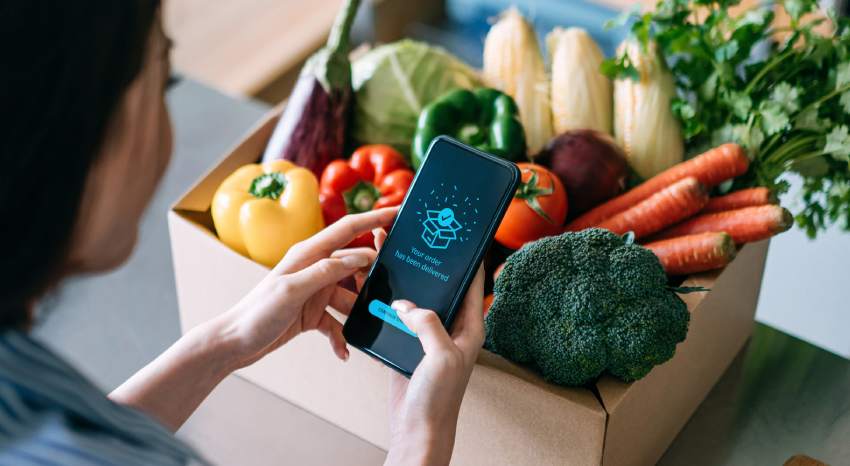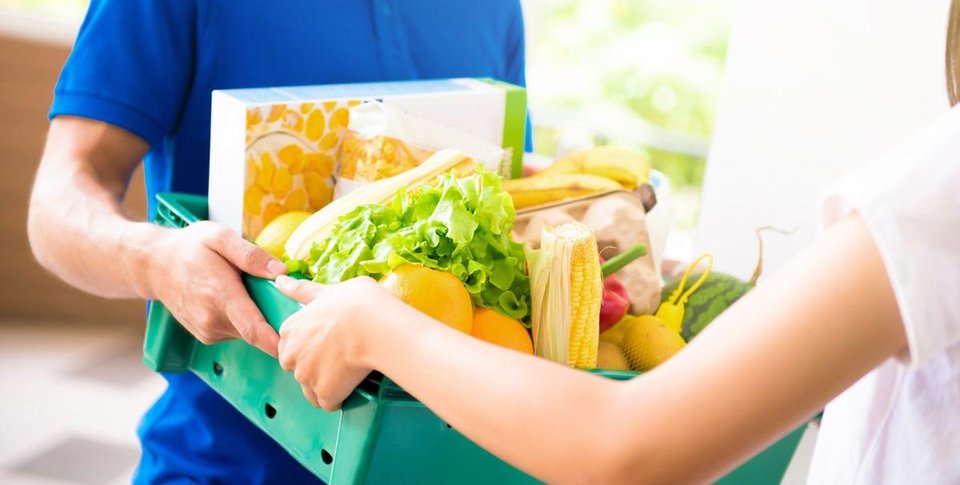

5 Lessons Learned From Top eCommerce Performers
By Silvana Daehn, Vice President - Channel Performance, Ipsos

The retail industry has made significant strides in adopting ecommerce models. A comprehensive study conducted by Ipsos focused on the Grocery sector serves to underscore this progress, revealing both strengths and potential areas for improvement.
The study found that ecommerce powerhouses Target and Walmart are the paragons of effective online shopping. With strategies grounded in shopper preferences and consistent execution, they outperformed competitors on the facets that matter most to ecommerce shoppers.
Big-box retailers who sell groceries are making significant ecommerce and infrastructure investments to streamline the ordering and fulfillment processes. Their goal is to make the buying of groceries and other household items a single, seamless transaction. Pure-play grocers need to invest to keep up.
- Silvana Daehn, Vice President - Channel Performance, Ipsos


Here are five lessons from the top performers in Ipsos’ study that can be applied to any retailer looking to refine their ecommerce initiatives
- Orders must be accurate. Order accuracy is a table stake in ecommerce. This reflects the industry's successful efforts in enhancing inventory availability and honing substitution processes. For both delivery and curbside orders, consumers cite order accuracy as the #1 and #2 driver, respectively, of using ecommerce again. While Target and Walmart orders were accurate throughout the study, some brands’ orders were not quite right as much as 10% of the time for the curbside pickup portion of the study. Meanwhile, for delivery, Target and Walmart orders were accurate 97% and 98% of the time, respectively, compared to the industry average of 94%. Inaccurate orders completely erode the convenience value proposition of ecommerce. While most brands are getting this right, there is no room in ecommerce for inaccuracy.
- Confirm that the order is ready. In a world where convenience is key, ecommerce exists as the ultimate way for shoppers to get what they need quickly and efficiently. When brands can reliably confirm that the order is ready – whether it’s out for delivery or ready for pickup – busy shoppers can plan accordingly and maximize their efficiency. Compared to the industry average of 92%, Walmart shoppers were notified 98% of the time that their orders were ready for delivery. This level of clear, consistent and timely communication is instrumental in minimizing potential friction in the process and reinforcing the perception of ecommerce as a highly efficient shopping method.
- Ensure the order is ready when promised. Especially for pickup orders, having the order ready when promised is one of the biggest areas of opportunity for ecommerce retailers. When the shopper receives a confirmation that the order is ready, it’s up to the brand and its fulfillment partners to ensure that the order actually gets to the customer when it was promised. This was the #4 driver of using ecommerce again for both delivery and pickup. Food Lion orders were ready to pick up when promised 98% of the time, while some brands’ orders were ready as infrequently as 71% of the time. Across the industry, only 83% of orders were on time for pickup. Meanwhile, for delivery, Food Lion orders were delivered when promised 89% of the time, while Target and Walmart were at 97% and 98%, respectively.
- For delivery, make sure it’s contactless and quick. Delivery shoppers are still concerned about contactless delivery, citing it as the #2 driver for using ecommerce for delivery again. For shoppers who want this feature, it’s important that the brands offering it actually carry out the orders in a contactless way. Costco trails the industry in this regard and offered contactless delivery 79% of the time, compared to the industry average of 88%. Many people who choose to have their orders delivered do so not just for convenience, but potentially out of a deeper, underlying apprehension. It could be a manifestation of social anxiety, an fear of interacting with delivery personnel, or of being judged by others based on their shopping habits. Others may be motivated by health concerns, fearing that direct contact might expose them to viruses or other illnesses. They might even be battling with the internal stigma of being perceived as lazy, believing that opting for home delivery is a testament to their lack of motivation or productivity. It's essential for brands to understand these nuanced emotions and fears, ensuring they provide a contactless delivery service that does not just meet the practical needs but also is sensitive to these psychological concerns.
Shoppers also want to be able to get their deliveries the same day, especially if they are charged a delivery fee. Across the industry, delivery times within 4 hours were available just over half the time (56%). Target offered expedited delivery times of within four hours 85% of the time. - For curbside pickup, instructions should be clear. Since curbside shoppers are oftentimes trying to fit in their pickup in a long list of errands for the day, it’s important that they don’t feel their time is being wasted by trying to figure out where to go and what to do. Not all brands always had signage telling shoppers where to pickup their orders, although Target’s signage indicating where to pick-up was present and clear throughout the study. Having clear signage and instructions on how to pickup orders will minimize friction in the process, thereby creating a smoother experience for shoppers.

Next Steps for Brands
Since well before 2020, US retailers have successfully integrated ecommerce into their operations, driving regular use among their customers. The industry has shown commendable adaptability, demonstrating a range of strengths in their ecommerce offerings. However, to truly stand out in this competitive landscape, brands must seize these five opportunities for improvement.
Ipsos Channel Performance can help ensure retailers’ service delivery is meeting customer and brand expectations. We partner with our clients to understand their shoppers, measure brand promises and execution, and drive sales conversions to improve performance across all channels – physical, contact center, and digital. Using our expert research services – Shopper Insights, Virtual Store Research, Mystery Shopping, and Execution Measurement – we deliver business impact via analytics, insights, and advisory services.
Methodology
This study was conducted in Fall 2023 as the fourth annual installment of a grocery ecommerce study that Ipsos has conducted since 2020. This study was designed to differentiate between three different fulfillment methods of obtaining grocery orders: In-Store Pick-up, Curbside Pickup and Delivery.
The approach was 2-pronged:
- Step 1: Ipsos conducted a 7-minute survey of 1,200 Americans to understand which elements of grocery pick-up and delivery are most important to consumers. The survey was conducted October 25, 2023. A Key Drivers Analysis was conducted to identify the top drivers of “Likelihood to Use Brand Again for grocery ecommerce” using Ipsos’ proprietary Ipsos Bayes Net (IBN) modelling technique.
- Step 2: Ipsos then deployed their panel of trained mystery shoppers to measure brand performance across a specific set of elements related to grocery pick-up and delivery. Roughly 33 mystery shops per method (In-store Pick-up, Curbside Pick-up, Home Delivery) were conducted for each qualifying retailer. Retailers were only shopped for methods they offered, so in some cases sample was redistributed appropriately across offered methods. Geographic representation was ensured across 4 regions (West, Midwest, Northeast, South). Mystery shops were fielded between October 23 – November 17, 2023. The relative importance of each service element ascertained from Step 1 was applied as a weighting factor to the Mystery Shopping results.
For a full copy of the results or to participate in Ipsos’ next ecommerce study (coming Fall 2024), contact Silvana Daehn at silvana.daehn@ipsos.com.
About Ipsos Channel Performance
At Ipsos Channel Performance, we partner with our clients to understand their shoppers and how they shop. We measure the execution of brand promises. We drive compliance and sales conversion. We improve performance across all sales and service channels – physical, contact center, and digital – and help deliver profitable growth. Learn more.
To learn more
Contact: Silvana Daehn
Email: silvana.daehn@ipsos.com.



